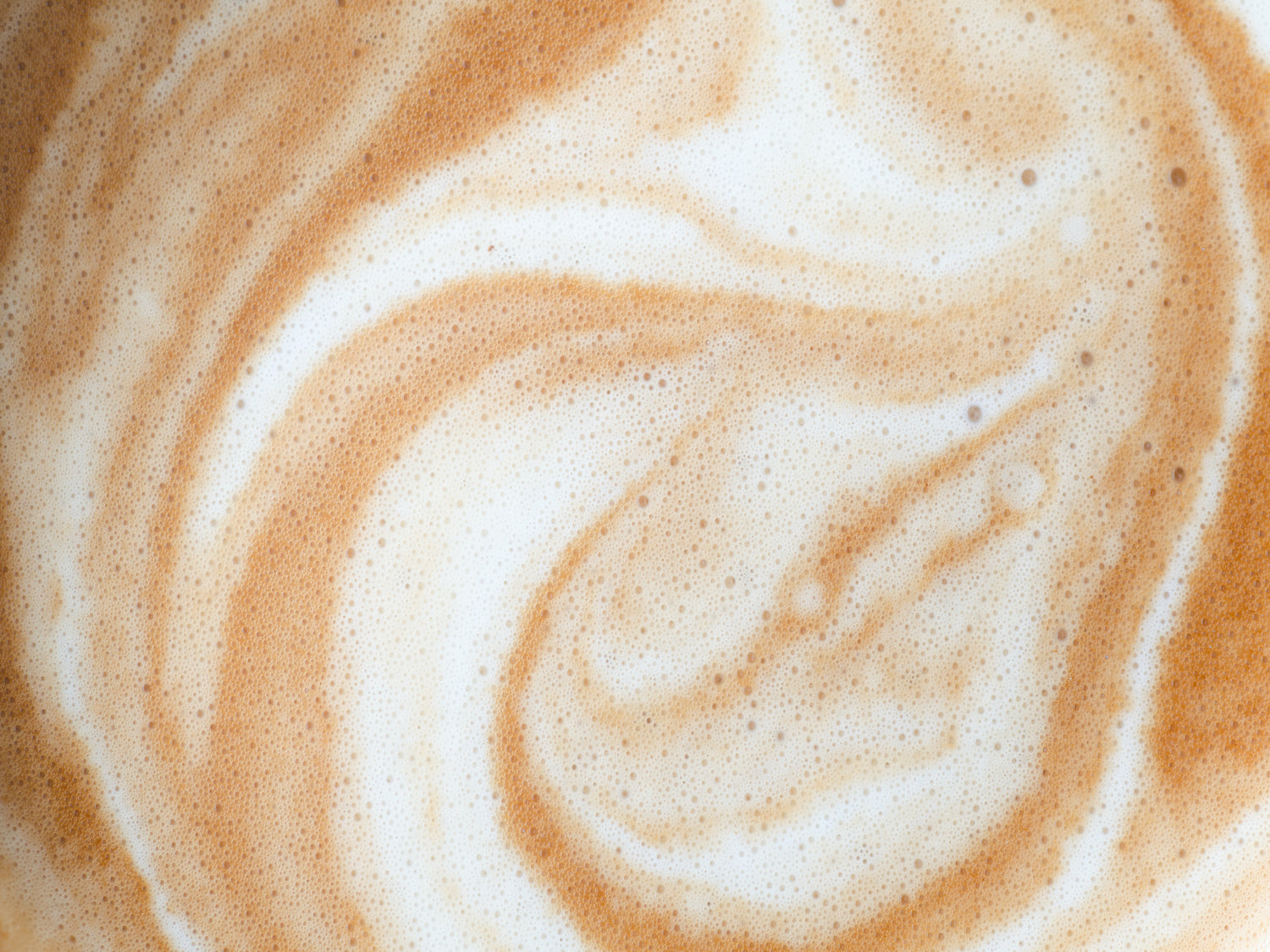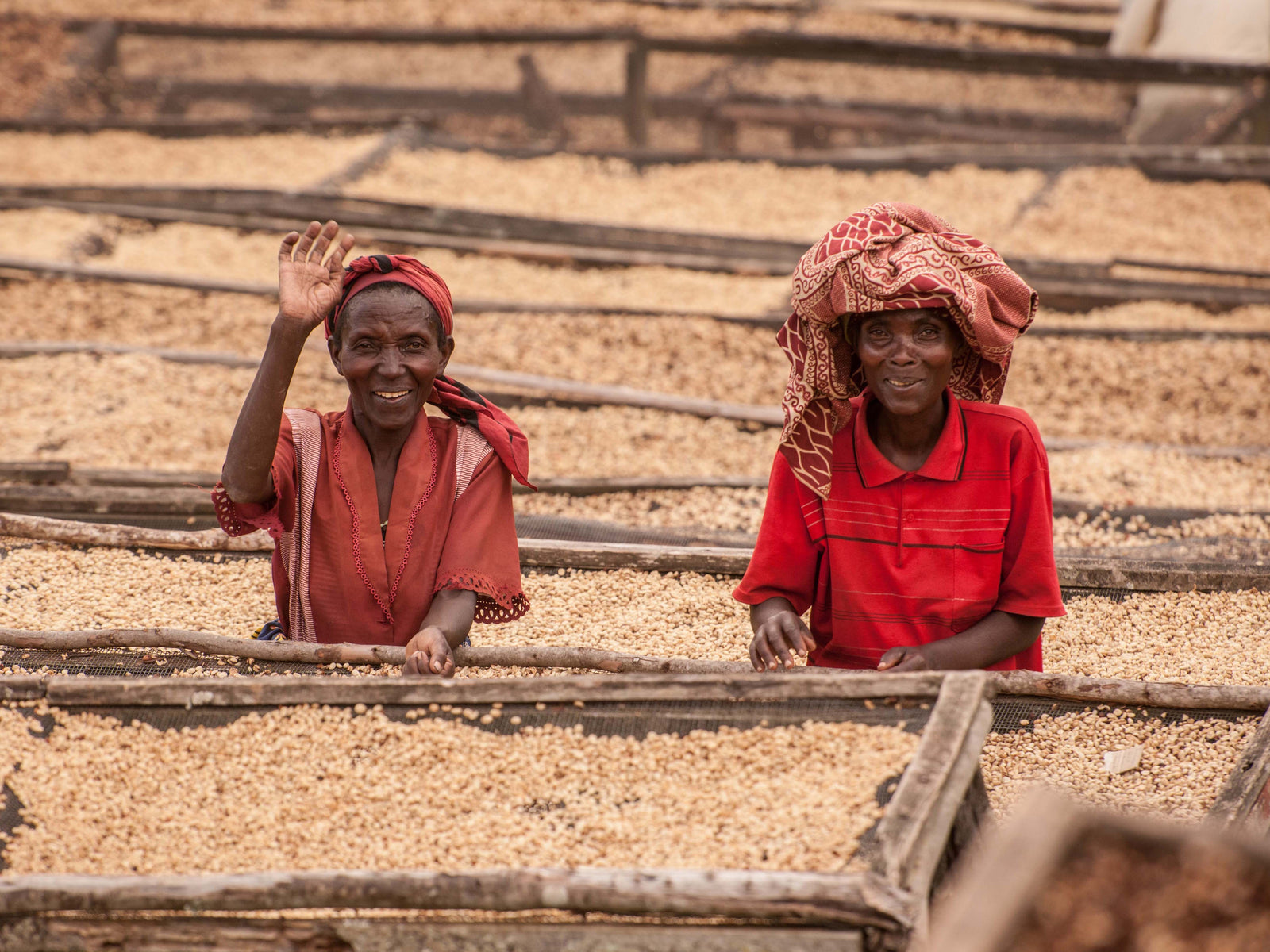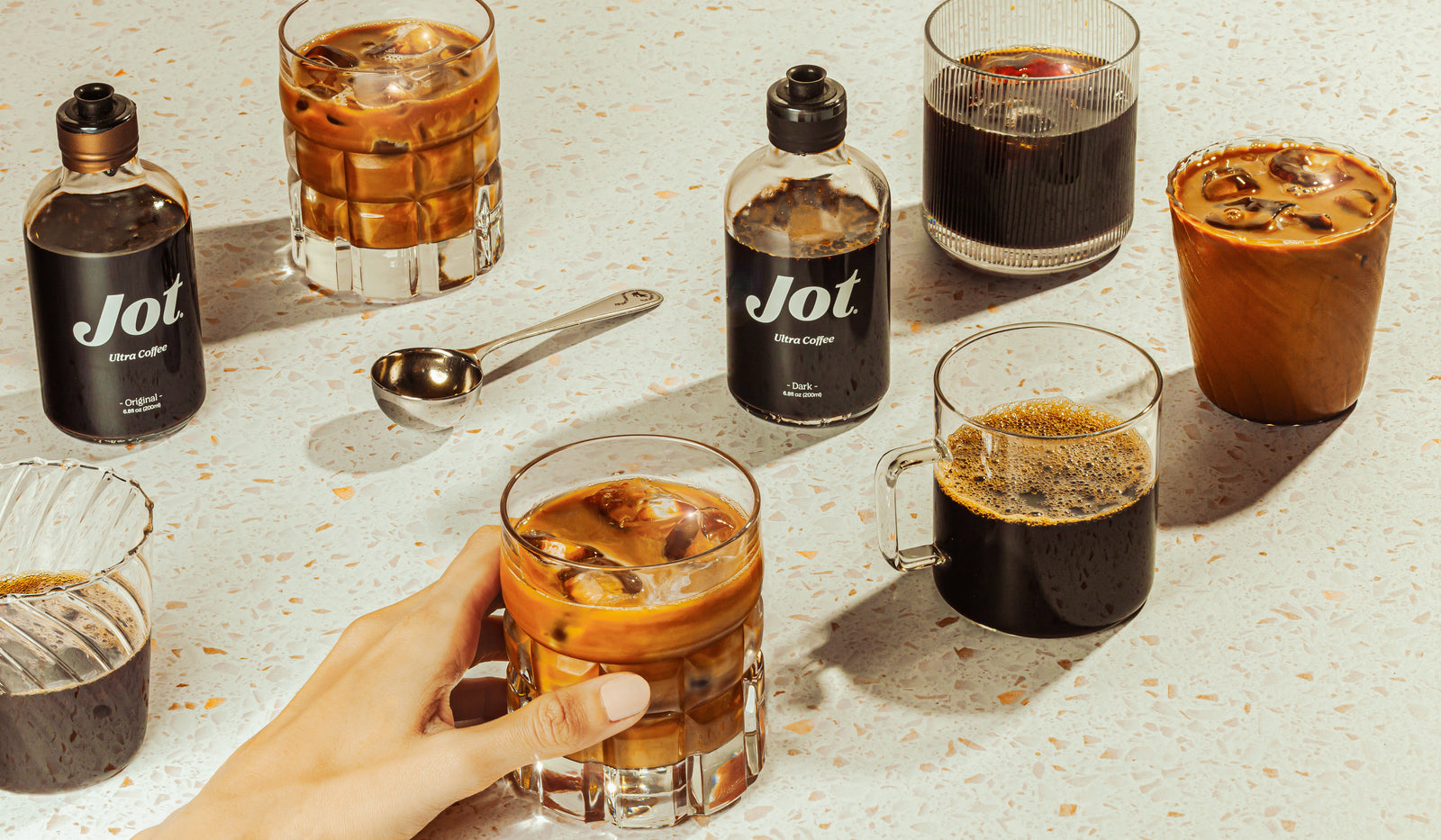These DIY latte tricks are easy, and you probably have all the equipment you need lying around your kitchen already.
No more FOAM-o
Jot liquid coffee concentrate was created to let you make any type of coffee drink at home, in seconds, with no fancy equipment.But if you’re an Ultra Coffee fan who likes a hot latte, cappuccino, or breve, how do you get the rich, creamy layer of milk foam that you would normally get at a coffee shop without buying some fancy espresso machine for steaming milk?
Jump straight to the milk froth hacks here. >>
The physics of milk foam
Foamed milk is just aerated milk, meaning air has been whipped into the milk in a way where the milk’s chemical structure holds air bubbles.
As food physicist Thom Huppertz puts it: “It doesn’t matter what technology you use.... What you’re always doing is controlling particles. You’re getting air into the system; you need to stabilize that. If you don’t stabilize it, it’s going to be gone in seconds.”¹
And what stabilizes air in milk foam is fat and protein particles. Which is why the gold standard for latte foam is whole cow’s milk. Because of its chemical structure, cow’s milk is uniquely suited to creating stable foam.²
But while heavy cream makes for an extremely silky foam it doesn’t create much volume, which is why it’s mostly used for specialty drinks like the breve.
On the other hand, fat-free and low-protein milks, such as skim milk and vegan milks can get good foam volume, but lack the silky texture. Additionally, their foams fade relatively quickly because they create larger air bubbles that pop, letting the milk liquid drain into the coffee. This is why a skim milk cappuccino, for instance, will taste “milkier” than a whole milk cappuccino after a while.
So, if what you’re looking for is a super-creamy latte or cappuccino where the foam is velvety smooth, the best type of milk to use is whole dairy milk – cold. The fat content makes for smaller bubbles that hold their structure.

The reduced fat content in skim milk and reduced protein in vegan milks like Oatly make for larger bubbles and therefore a less stable foam, that’s all. Your skinny cappuccino or oatmilk latte will be delicious regardless.
How do the baristas do it?
There are two basic ways of aerating milk:• Agitation
• Injection
The method of aerating milk that baristas use is the “injection” method. The “wand” on the barista’s espresso machine injects air – in the form of highly pressurized steam – into a pitcher of milk through tiny nozzles.
There’s a reason that great independent coffee shops often make a richer, smoother latte or cappuccino than what you’d get at one of the big coffee chains. Steaming milk is a true art. It requires great equipment, time, training, and care.
Now, if you’ve ever worked as a barista in your life, then you already know that it is no small feat to get perfect milk foam even with a well-calibrated, top-of-the-line, professional-grade espresso machine.
For milk foam to have just the right level of silkiness and stability, the steaming wand must be clean and be calibrated to have the right amount of pressure.
The milk, too, must be at the right temperature. Too warm and the foam just won’t hold.
The barista must then place the steaming wand at the exact angle to the milk surface while it aerates, creating air bubbles that give the froth its texture. Hold the wand too near the surface, and you’ll only froth the top of the milk, making a stiff layer more like meringue that must be spooned onto the top of a cappuccino or latte but doesn’t mix well into the drink.
The barista must also hold the wand at the exact right depth in the milk pitcher and then move the wand through the milk in such a way that it heats the milk evenly. Too high up and they risk leaving the bottom portions of the pitcher too cold. Hold the wand too deep, and they won’t get any foam at all, likely ending up with nothing but a pitcher of scalded milk.
So how do you make a latte at home?
With the milk steamer on a fancy espresso machine, to get everything just right takes hours of practice, on hundreds of drinks. It’s a delicate balance between temperature, fat and protein content, air pressure, and the barista’s own sense of timing and level of experience.
If you’ve never worked as a professional barista, it’s honestly unlikely that you’ll be able to recreate a coffee shop-level of quality using just the steam feature on a kitchen espresso machine. It’s a hard truth, but there you have it.
How to make a latte at home: 4 tricks
That’s why, to make a latte at home, don’t even bother trying to steam the milk. In fact, don’t bother with injection as a method at all. Instead, go with agitation.
Our 4 hacks for how to make a latte without a machine are essentially four ways of aerating the milk using the agitation method.
Latte Hack #1: Just push a button.
This is the easiest way to get milk foam at home. First, simply put your milk in a pot on the stove to a temperature of around 150–160°F. (Note: Milk scalds at 181°F, so it’s worth having a kitchen thermometer if you want to make sure your milk is hot but not too hot.) Once your milk is hot, simply use a handheld milk frother or a jug-style milk frother to aerate it until it’s at the right texture. If using a wand, you’ll want to keep the head at the edge of your milk and slowly move it around in the milk to bring more air in and then to break up the larger air bubbles. As you use the frothing wand, the milk bubbles will get smaller and smaller until you’re left with a smooth and silky milk foam for a perfect hot latte or cappuccino made with Jot Ultra Coffee concentrate.
Once your milk is hot, simply use a handheld milk frother or a jug-style milk frother to aerate it until it’s at the right texture. If using a wand, you’ll want to keep the head at the edge of your milk and slowly move it around in the milk to bring more air in and then to break up the larger air bubbles. As you use the frothing wand, the milk bubbles will get smaller and smaller until you’re left with a smooth and silky milk foam for a perfect hot latte or cappuccino made with Jot Ultra Coffee concentrate.
Latte Hack #2: Whip it good.
For the second milk frothing trick, you’ll want to start the same way: heat your milk to around 155° without scalding it.

Then, simply do the manual version of the frothing wand. Use a wire whisk. This method definitely requires more wrist and forearm stamina than the milk frother does, but it will still get the job done. Using a rapid circular motion, quickly whisk the hot milk to incorporate air into it and get it to your desired texture.
Just be careful not to splash yourself with the hot milk, and side note: This is the same technique you’d use to make meringue from egg whites or whipped cream out of heavy cream, so once you master it, you can put it to use elsewhere.
Latte Hack #3: Shake, shake, shake.
Same, same: Heat your milk to around 155° without scalding it.Then, this might be the most basic method overall. Add hot milk to a mason jar or cocktail shaker and shake for 30–45 seconds. The shaking is what aerates the milk, so pretty quickly you’ll have well aerated milk, ready for pouring.

(Note: Be careful not to burn your hands since the glass of the mason jar or thin metal of the cocktail shaker will get hot. Use oven mitts or a towel just to be safe.)
Latte Hack #4: Foam à la française
If you’re like me, ever since you started drinking Jot liquid coffee concentrate, your old coffee-making methods have been gathering dust. Well, this method is especially great since it finally gives your old French press something to do.
Now that you’ve got your foam, it’s time to make the perfect Jot latte or Ultra cappuccino. Check out those recipes (and many many more) including recipes for how to make your own Jot pumpkin spice latte, how to make a cold brew latte at home, and lots of others.
¹ Thom Huppertz: The Science of Milk Foam
² "Milk Foam: Creating Texture and Stability" by Thom Huppertz of NIZO Food Research









